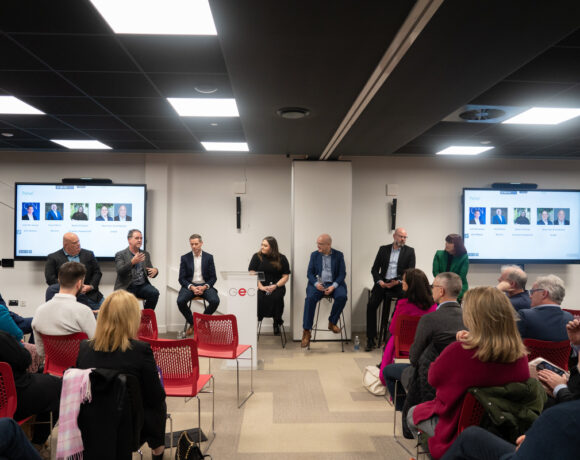The latest advances in big tech, big data and big science mean very little when it comes down to the age-old traits required when leading a group of people.
What does the newest thinking about leadership development say about the need for local government leaders to learn to lead across multiple functions, or influence whole segments of the organisation, particularly in the rapidly changing world of local government management?
There are hundreds of books written about leadership every year, adding to the thousands of titles already available. There also are new assessment tools based on advancements in brain science, emotional intelligence, and relational modeling; new computer aided algorithms for decision-making; virtual reality simulations; and a host of new experiential programs, online courses, and university certifications. With such a flurry of developments, there must be some useful new ways to think about leadership?
The reality, however, is somewhat different. The leadership development industry is thriving – reference the plethora of motivational speakers touting the latest in their approach to leadership and asking you to sign up to their executive programme with snazzy Youtube videos and online ads.
Sometimes however real leadership innovation isn’t about creating something bright and shiny and new. Perhaps it’s about dusting off an old piece of wisdom that others have forgotten in the rush toward novelty. Or maybe it’s about taking lessons long recognised in other sectors but not applied in your own, whether that means learning something from a different area of business or from an entirely separate field.
Granted there are a lot of new and interesting ideas, some of which may prove to be helpful. But despite many changes — as organisations have become more democratic and networked, for example — the fundamentals of leadership have not changed over the years. It is still about mobilising people in an organisation around common goals to achieve impact, at scale.
Mastery of a musical instrument means going over the same basic lessons again and again until they become instinctive, mastering the fundamentals before you apply anything more advanced. The same lesson can be applied in leadership–get the fundamentals right and the rest will follow.
“It’s about dusting off an old piece of wisdom that others have forgotten in the rush toward novelty.”
Here are four fundamentals of good leadership worth mastering:
- Humility
When you’re at the top and everyone is looking up to you for guidance it can be easy to think that leadership is about you. But that’s a deceptive and destructive way of thinking. As historic leaders such as George Washington have realised, leadership is about the people around you. IT’S NOT ABOUT YOU.
The core fundamental of leadership is about understanding the emotional underpinnings of the people you are trying to lead. Recognise their concerns. Live with the difficulties they face. Make your focus on them rather than on yourself, your ideas, and your status. If you do those things then people will follow you no matter what it takes, just like they did for Washington. Leadership is about the led.
- Communication
Good communication is central to every human relationship, and so to every business relationship. Whether it’s with customers, colleagues, or suppliers, clear communication builds trust, improves productivity, and ensures that the job is done right.

Good communication is about listening as much as speaking; planning as much as delivering; personal moments as much as addressing the room. There are lots of details to work on, but they all come back to the fundamental point of communicating well.
- Trust
Trust is vital to leadership and it isn’t something that just happens. You have to earn people’s trust, and to practice the skills that will help you to do this–communicating clearly, listening to others, setting and living up to clear expectations.
But trust is a two-way thing. If you don’t show others that you trust them then you reduce their ability to do their best work and you prevent them from ever fully trusting you. So you also have to learn to trust others, and to act on that trust. Don’t try to control the details. Recognise that solutions other than your own may be good enough or even better than what you came up with. Let others do their best without you peering over their shoulders. In the end you’ll all get more done.
- Innovation
It’s easy to get stuck in familiar patterns. After all, following the same routine is easy and it feels safe.
But anyone can follow a routine. A leader needs to innovate and to show others how this is done, or the whole organisation will slip into complacency and stagnate.
Practice trying new things and developing new ideas. Apply skills from outside of your field. Develop new thinking habits. Train your brain to innovate.
If scales are the fundamentals of learning to play music then principles like these are the fundamentals of learning to lead. If leaders keep practising them then the other skills and habits will easily follow.
Leadership is about being led
Bullfighters study other bullfighters, but they also spend an awful lot of time studying bulls. The more you know about how bulls behave, the more control you have over the situation. Imitating what you can see an expert bullfighter doing might get you through a bullfight, but then again, it might not, especially if the bull is not in the mood to help you along. It’s very important to have some comprehensive knowledge of how the bull is looking at the situation, and that knowledge – that “invisible mastery”– takes time to acquire. There is no method book that will give you that gut-level insight.
When it comes to managing people, the biggest problem in developing this invisible aspect of leadership is, it is fairly difficult to get your hands on reliable information without testing each piece yourself. An awful lot of people just tell us what we want to hear, and they leave out what they don’t want us to hear. Sycophants abound, telling us all how wonderful we are. If you have the power to hire and fire, it’s highly likely that information coming to you has been edited in some way. There is also the problem of being immersed in a cultural silo that gives you a narrowly skewed model. Then there is the gauze placed over our perceptions by social media. And never mind how often we are naively drawn to idealised visions of what we would like other people to be.
Leading Yourself
Researchers working on the Harvard Business Review Leader’s Handbook interviewed over 40 successful leaders from a variety of organisations (corporate, non-profit, startup), across different industries and sectors. They also reviewed several decades worth of articles from the Harvard Business Review to understand the recurring messages from academics and practitioners about what leaders should do. Their conclusion was that the best leaders with the most impact almost always deploy these six classic, fundamental practices:
- uniting people around an exciting, aspirational vision;
- building a strategy for achieving the vision by making choices about what to do and what not to do;
- attracting and developing the best possible talent to implement the strategy;
- relentlessly focusing on service delivery and results in the context of the strategy;
- creating ongoing innovation that will help reinvent the vision and strategy; and
- “leading yourself”: knowing and growing yourself so that you can most effectively lead others and carry out these practices.
The starting point can vary around any of the above, and one or more of the six areas requires listed more often than not require more heavy lifting than another, or the sequence of activities varies.
And of course depending on the person, leaders go about these practices in different ways depending on their personalities and their situations. But the same handful of practices are always present.
To move organisations to the next level, successful leaders commonly deployed many of these practices — practices that are supported by numerous studies and articles, many of them far from new. And even though these leaders were operating in different industries, geographies, and with new technologies and structures, they were still dealing with people who needed to work together to achieve a common goal, which is what leadership has always been about.
So when it’s time to think about developing bigger leadership goals, the secret seems to be not to look for a new framework, but rather to help leaders master the tried and true practices that already exist.
It’s a Very Long Road
Most of us are naturally narcissistic and somewhat self-conscious, especially when we’re trying to do something for the first time, and especially when we’re doing something that is as vulnerability-exposing as being in a leadership position. We’re always eager to get a sense of control, and lots of people try to leverage our fear in selling us advice on how we can do the task with minimal effort or risk. It’s easy to think we can get the job done via a simple process of following procedures and emulating the experts. But this never works. You must acquire this invisible element of mastery, which is understanding what your followers are all about. Sadly, most of your followers have no objective sense of themselves either, they just know what they like and don’t like. Achieving this invisible element of leadership mastery, like anything else, is a long hard road of experiment, discovery, and ever-rising consciousness.
Additional reporting from hbr.org and John Greathouse: www.johngreathouse.com














